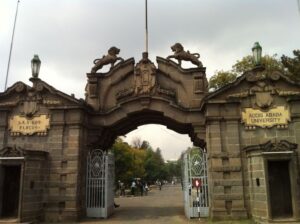Prepare to delve into the captivating world of the University of Tennessee football stadium, a revered sanctuary where legends are forged and memories are made. Immerse yourself in a captivating narrative that unveils the stadium’s rich history, architectural grandeur, and the electrifying game day atmosphere that defines the spirit of Tennessee Volunteers.
Step into a realm where passion and pride collide, where the stadium’s iconic design and state-of-the-art amenities create an unforgettable experience for fans and players alike. Discover the stadium’s profound impact on the surrounding community, fostering a sense of unity and contributing to the economic vitality of the region.
Stadium History and Timeline

The University of Tennessee football stadium, officially known as Neyland Stadium, has a rich history dating back to the early 20th century. Its inception and subsequent development are closely intertwined with the growth and success of the university’s football program.
The stadium’s origins can be traced to 1921, when the university acquired a 10-acre plot of land adjacent to its campus. The initial stadium, known as Shields-Watkins Field, was a modest wooden structure with a capacity of just 3,200. However, as the football team gained prominence under legendary coach Robert Neyland, the need for a larger and more modern stadium became apparent.
Expansion and Renovations
In 1962, the stadium underwent a major expansion that increased its capacity to over 70,000. This expansion included the construction of the iconic “T” formation on the north end of the stadium, which has become a symbol of Tennessee football.
Further renovations and expansions followed over the years, including the addition of luxury suites and club seats, as well as the installation of a state-of-the-art video scoreboard. In 2005, the stadium was officially renamed Neyland Stadium in honor of Robert Neyland, who led the Tennessee Volunteers to three national championships.
Impact on the University and Community
Neyland Stadium has had a profound impact on the University of Tennessee and the surrounding community. It is a source of pride for students and alumni, and it serves as a major economic driver for the city of Knoxville. The stadium has also hosted numerous concerts and other events, further enhancing its significance as a community landmark.
Architectural Features and Design

Neyland Stadium stands as a testament to architectural ingenuity, showcasing a blend of classic design elements with modern amenities. Its colossal structure boasts a seating capacity of over 102,000, making it one of the largest stadiums in the country.
The stadium’s design draws inspiration from classic Roman amphitheaters, featuring a horseshoe-shaped bowl that creates an immersive experience for spectators. The exterior facade is adorned with iconic limestone arches and columns, paying homage to the university’s rich architectural heritage. The use of Tennessee marble in the construction adds a touch of elegance and durability to the structure.
Sustainable Features
Neyland Stadium incorporates sustainable design elements that minimize its environmental impact. The stadium utilizes energy-efficient lighting systems and rainwater harvesting techniques to reduce its energy consumption and water usage. Additionally, the use of recycled materials in the construction process contributes to its eco-friendly credentials.
Impact on the Cityscape
As a prominent landmark in Knoxville, Neyland Stadium has a significant impact on the city’s cityscape. Its towering presence dominates the skyline and serves as a beacon for fans and visitors alike. The stadium’s location adjacent to the Tennessee River provides a picturesque backdrop for events and enhances the overall aesthetic appeal of the city.
Game Day Atmosphere and Traditions
The University of Tennessee football stadium pulsates with an electric atmosphere on game days. A pre-game ritual that has become a fan tradition is the “Vol Walk,” where the team marches through the university’s campus to the stadium, accompanied by the university’s band and a throng of enthusiastic fans.
Fan Traditions
The stadium erupts in a sea of orange as fans proudly display their Tennessee Volunteers colors. The “Rocky Top” cheer, an iconic symbol of the university’s spirit, reverberates throughout the stadium, creating a deafening roar that echoes the team’s determination on the field.
Crowd Dynamics
The stadium’s acoustics amplify the crowd’s energy, creating an immersive and unforgettable experience. The crowd’s unwavering support and passion for the Volunteers fuel the team’s performance, making every game a thrilling spectacle.
Community and Pride
Game days at the stadium transcend sports and become a celebration of community and pride. Fans from all walks of life come together to share their love for the university and its football team. The stadium serves as a symbol of unity and a reminder of the deep bond between the university and its supporters.
Economic Impact and Community Involvement
The University of Tennessee football stadium serves as a significant economic driver for the local community, generating substantial revenue and creating numerous job opportunities. The stadium’s hosting of major sporting events and concerts attracts visitors from across the region, leading to increased spending on lodging,餐饮, and other tourism-related activities. The economic impact extends beyond game days, as the stadium also hosts various community events and charitable initiatives, fostering a sense of unity and well-being within the surrounding area.
Revenue Generation
The stadium generates significant revenue through ticket sales, concessions, merchandise, and event rentals. These revenues contribute to the university’s athletic department budget, supporting the operations of the football program and other athletic teams. Additionally, the stadium’s economic impact extends to local businesses, as fans and visitors spend money on餐饮, lodging, and other goods and services before, during, and after games.
Job Creation
The stadium’s operation requires a substantial workforce, creating employment opportunities for individuals in various fields. These jobs include event staff, security personnel, concessions workers, and maintenance crews. The stadium also indirectly supports job creation in the hospitality and tourism sectors, as increased visitation leads to increased demand for services in these industries.
Community Involvement
Beyond its economic impact, the stadium plays an active role in community engagement. It hosts charitable events, such as fundraisers and food drives, to support local organizations and causes. The stadium also serves as a venue for community events, such as youth sports tournaments and concerts, fostering a sense of community and pride.
Future Plans and Developments

The University of Tennessee has ambitious plans for the future of Neyland Stadium, aiming to enhance its status as a world-class sports and entertainment venue while preserving its iconic legacy.
The university envisions the stadium as a multi-purpose destination, hosting not only football games but also concerts, major events, and conferences. To achieve this, plans include upgrades to the stadium’s infrastructure, technology, and amenities.
Stadium Renovations and Expansions
- Expanded seating capacity: Plans are underway to increase the stadium’s seating capacity to accommodate the growing demand for tickets.
- Premium seating options: New premium seating options, such as luxury suites and club seats, will be introduced to enhance the fan experience and generate additional revenue.
- Improved concourses and amenities: The stadium’s concourses will be widened and modernized, offering fans more space to move around and access concessions and restrooms. New amenities, such as charging stations and Wi-Fi hotspots, will also be added.
Technology and Innovation
- Enhanced digital experience: The stadium will be equipped with cutting-edge technology to provide fans with an immersive and interactive experience. This includes a new mobile app, digital signage, and augmented reality features.
- Smart stadium initiatives: Neyland Stadium will become a “smart stadium,” utilizing sensors and data analytics to improve operations, enhance security, and optimize the fan experience.
Legacy and Community Impact
The future plans for Neyland Stadium are designed to preserve its legacy as a historic and iconic venue while also ensuring its continued relevance and significance for the university and the community.
- Community engagement: The university plans to expand the stadium’s role in the community, hosting youth sports events, educational programs, and other initiatives that benefit the surrounding area.
- Economic impact: The renovations and upgrades to Neyland Stadium are expected to have a significant positive impact on the local economy, creating jobs and boosting tourism.
FAQ Guide
What is the seating capacity of the University of Tennessee football stadium?
The stadium boasts a seating capacity of over 102,000, making it one of the largest stadiums in the Southeastern Conference (SEC).
When was the stadium built?
The stadium was originally constructed in 1921 and has undergone several renovations and expansions over the years, most notably in 1962 and 1996.
What is the unique architectural feature of the stadium?
The stadium’s most distinctive feature is its massive concrete horseshoe-shaped seating bowl, which provides fans with an unparalleled view of the field.
What is the name of the stadium’s iconic end zone?
The stadium’s south end zone is known as “The Hill,” a legendary standing-room-only section renowned for its enthusiastic and boisterous atmosphere.




